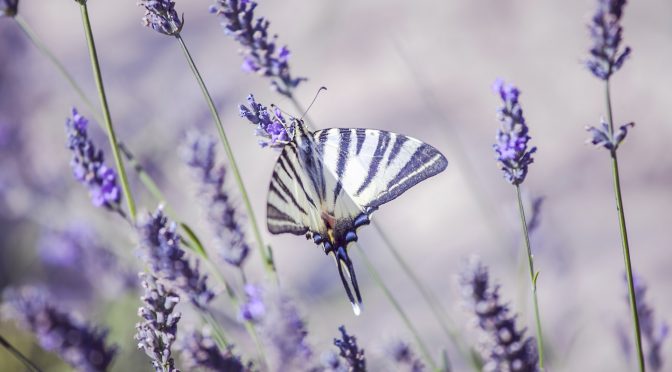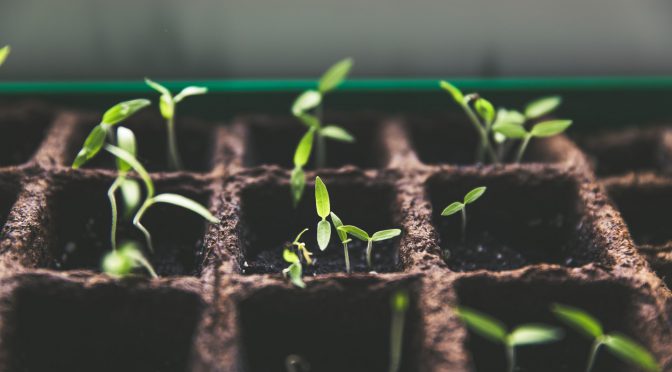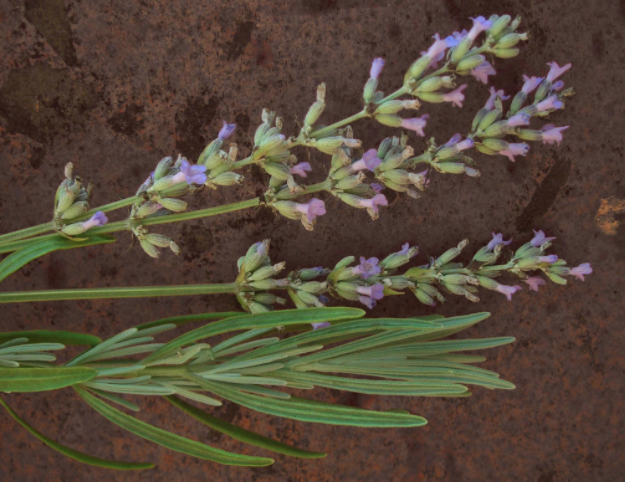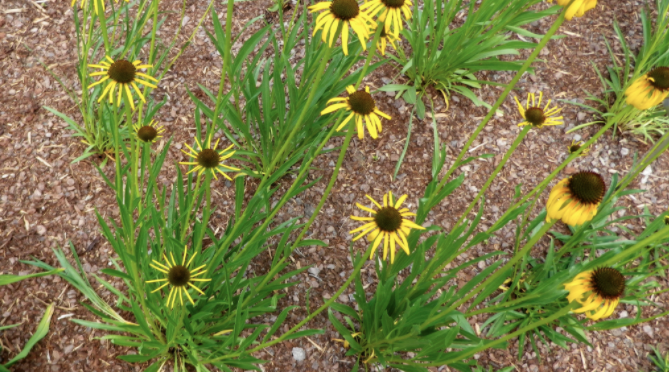Lavender is a terrific addition to any perennial garden. It’s fragrant, beautiful, and can be used medicinally or to discourage moth damage and musty odors in woolens and linens. If you’re gardening on a budget, it can be much more cost-effective to start lavender from seed rather than purchasing plants. This advice will help you have success.
Starting Your Seed
Note that not all lavender cultivars will come true from seed. Select one that will like English Munstead.
You can use trays commonly used in vegetable gardening to start lavender. It’s best to use a light, slightly alkaline sterile, and well-draining potting medium. Lavender can be prone to rot if it stays waterlogged.
Lavender can take up to 30 days to germinate, so starting your plants early is key! Place your seeds in your tray and lightly cover them with soil. It germinates best in soil that is around 70°F. To ensure your soil is warm enough, keep your trays in a warm area of your home and use seedling heat mats if available.
Water your lavender regularly, especially as the seed is germinating but avoid overwatering and constantly wet soil. Use lights if you’re starting indoors.
Planting Out
After all danger of frost has passed and your plants have a couple of sets of leaves, you can transition your seedlings out to the garden. Harden them off, bringing them outdoors for just a little bit longer each day.
Plant seedlings in a bed with well-drained soil that receives full sun. Lavender is sensitive to wind. Depending on your garden, you may need to provide wind protection during the winter. Covering your plants with a breathable fabric like burlap is a good option.
Once mature lavender plants make excellent borders and are great for achieving a cottage garden style.
Lavender grows very slowly, especially in the first year. Your garden bed may take a while to look full and impressive.
Harvesting
 During the first year, it’s best to let your lavender grow without cutting any. By year two, your plants should be larger and flowering. During the second year, you should be able to begin harvesting, if desired.
During the first year, it’s best to let your lavender grow without cutting any. By year two, your plants should be larger and flowering. During the second year, you should be able to begin harvesting, if desired.
The best time to harvest lavender is when the buds have formed, but the flowers haven’t opened yet. Harvesting at this time will ensure the best color and fragrance once the lavender is dry.
Use sharp, cleans scissors or pruners to harvest your lavender. Always leave at least one set of leaves growing on the stem below your cut.
Bundle your stems into small bunches and hang them upside down somewhere out of direct sunlight to dry.
Using Your Lavender
After your lavender has dried, in about 2-4 weeks, you can use it for a variety of projects. Use your lavender to make wreaths or simply enjoy the bundles hanging or in vases throughout the house.
You can also easily strip the buds off the stems with your fingers. The buds can then be sewn into satchels for keeping with clothing or under pillows to help with sleep.
Use the buds for herbal tea and adding to lemonade. Lavender is a traditional herbal remedy used for stress-related headaches and as a carminative, antidepressant, and calming tonic for the nervous system.
Lavender buds can also be used to create infused oils for soap or salves or in bath salts for their pleasant, soothing fragrance.




